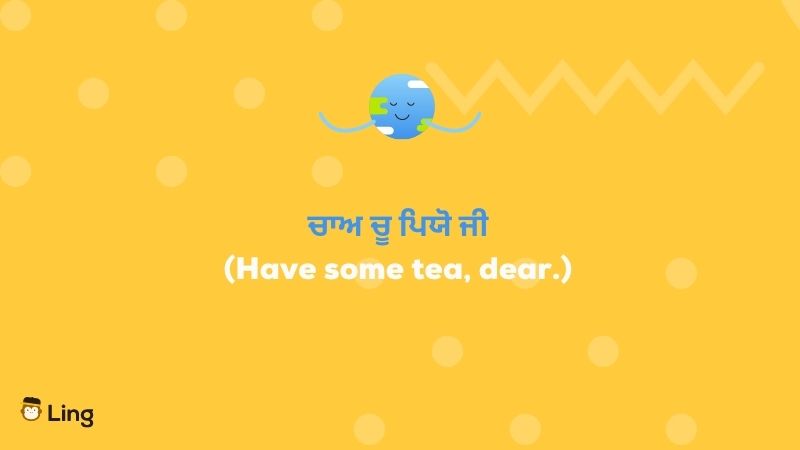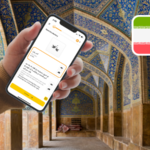Are you a fan of Punjab (ਪੰਜਾਬ) and its rich culture, particularly foot-tapping Punjabi songs and dance numbers? Then you must have noticed how rhyming words in Punjabi form the foundation of the music meter to which the song is set.
The use of rhyming words is one of the most basic concepts of poetry and songwriting, common across languages. Let’s find out how it is also beneficial in Punjabi language learning.
List Of Common Rhyming Words In Punjabi
From a linguistic point of view, a rhyme scheme is an important learning tool, especially for kids. It also comes in handy for adults attempting to learn a new language. Not only that, it adds a fun element to learning by incorporating silly, gibberish words that invoke laughter. For instance, saying Cā’a śā (chaa-shaa) in Punjabi is similar to saying fancy-schmancy in English.
| English | Punjabi | Roman Transcription |
|---|---|---|
| Tea | ਚਾਅ ਸ਼ਾ | Cā’a śā |
| Chapati/ Food | ਰੋਟੀ ਸ਼ੋਤੀ | Rōṭī śōtī |
| Water | ਪਾਣੀ ਪੂਣੀ | Pāṇī pūṇī |
| Meal | ਖਾਣਾ ਵਾਨਾਂ | Khāṇā vānāṁ |
| Okay | ਠੀਕ ਠਾਕ | Ṭhīka ṭhāka |
| Chicken | ਕੁੱਕੜ ਸ਼ੁੱਕਰ | Kukaṛa śukara |
| Trouble | ਰੋਲ ਸ਼ੋਲਾ | Rōla śōlā |
| A sweetmeat ball | ਲੱਡੂ ਸ਼ੱਦ | Laḍū śadu |
| Door | ਬੁਆ ਸ਼ੁਆ | Bu’ā śu’ā |
| Marriage | ਸ਼ਾਦੀ ਸ਼ੂਦੀ | Śādī śūdī |
| Lassi (a yogurt based cold drink) | ਲੱਸੀ ਲੂਸੀ | Lasī lūsī |
Rhyming Words As A Linguistic Tool
As you know, a rhyme or ਤੁਕਬੰਦੀ (pronounced as tukabadī) is a word with the same sound as another word with a different meaning or even a gibberish word without any meaning. Rhyme words work toward increasing the phonemic awareness of the language in the new learner, especially kids in elementary schools learning Punjabi school phrases.
Now, wait a minute! What is phonemic awareness? It is simply the ability to identify that words are made up of different sounds. This recognition helps little kids read and write better and learn a language better. This is why even toddlers are introduced to nursery rhymes early on. A nursery rhyme is the easiest way to teach language learning to a kid.

Reduplication
A rhyme scheme is a globally featured phenomenon in the linguistic circle. However, it is more pronounced as rhyming reduplication in many Indo-European and Dravidian languages. Punjabi, in particular, has the most popularly known rhyming reduplication words in its kitty, closely followed by Hindi, Bangla, Marathi, Kannada, and so on, in no particular order.
Reduplication happens when a real word is followed by a phony or gibberish word that rhymes with the first word. In linguistics, reduplication is a process wherein the root or stem of a word or a part of it, or even the whole word, is repeated exactly or with a slight change. For instance, words like easy-peasy, tuk-tuk, or ding-dong in the English language fall in the category of rhyming reduplication.
Not only this, reduplication is further divided into three more categories. Let’s take a look at these categories and some examples in the English language.
- Rhyming reduplication: Easy-peasy, okey-dokey, willy-nilly, helter-skelter, hurly-burly, hocus-pocus, hoity-toity, boogie-woogie, razzle-dazzle and so on.
- Exact reduplication: Aye-aye, bye-bye, choo-choo, tuk-tuk, blah-blah, ha-ha, and so on.
- Ablaut reduplications: Here, the first vowel usually is a high vowel. For instance, flip-flop, ding-dong, tick-tock, ping-pong, pitter-patter, and so on.
Reduplication In The Punjabi Language
In Indo-European and Dravidian languages, reduplication works a tad differently than the rest. Most particularly in Indic languages like Hindi, Urdu, and Punjabi. The repeated word can be fixed anywhere, either at the start, middle, or end. Let us look at the various types of reduplication that exist in the Punjabi language and their usage in sentence structure.
Complete Reduplication
Here, the same word repeats itself and both words are important for making the sense or meaning of the sentence.
| English | Punjabi | Roman Transcription | Sentence In Punjabi | English Translation |
|---|---|---|---|---|
| Hurry/ Quickly | ਛੇਤੀ-ਛੇਤੀ | Chētī-chētī | Chētī-chētī kama kar putara | Work quickly, son. |
| Where | ਕਿੱਥੇ-ਕਿੱਥੇ | Kithē-kithē | Tū ajakala kithē-kithē ghumadā sī | Where (all) do you roam these days? |
| (One’s) own | ਆਪਣੇ-ਆਪਣੇ | Āpaṇē-āpaṇē | Āpaṇē-āpaṇē ghara jā’ō, hara kō’ī | Go to your home, everyone. |
Partial Reduplication
Partial reduplication involves a repetition of words with minor changes.
| English | Punjabi | Roman Transcription | Sentence In Punjabi | English Translation |
|---|---|---|---|---|
| Tea | ਚਾਅ ਚੂ | Cā’a cū | Cā’a cū piyō jī | Have some tea, dear. |
| To jump | ਟੱਪ ਤੁੱਪ | Ṭapa tupa | Puṭa, ithē nā ṭapa tupa | Son, don’t jump here. |
| To study | ਪੜ੍ਹ-ਪੁੜ੍ਹ | Paṛha-puṛha | Paṛha-puṛha kē badā baṇa jā | Study and become a man! |
Semantic Reduplication
Here, two repeated words are not the same, but the meaning of both words are the same.
| English | Punjabi | Roman Transcription | Sentence In Punjabi | English Translation |
|---|---|---|---|---|
| Cars | ਗੱਡੀਆਂ ਕਾਰਾ | Gaḍī’āṁ kārāṁ | Iha saṛaka gaḍī’āṁ kārāṁ nāla bharī hō’ī hai | This road is full of cars. |
| Eating | ਖਾਣਾ ਪੀਣਾ | Khāṇā pīṇā | Khāṇā pīṇā hō gayā? | Are you done eating? |
| Playful | ਹੱਸਦੀ ਖੇਲਦੀ | Hasadī khēladī | Hamēśā hasadī khēladī rah, mērī puṭa | Always stay playful, my (girl) child. |
Discontinue Word Reduplication
Here, two contiguous repeated words are differentiated by any single different word.
| English | Punjabi | Roman Transcription | Sentence In Punjabi | English Translation |
|---|---|---|---|---|
| Simultaneously | ਨਾਲੋਂ ਨਾਲ | Nālō nāla | Uha nālo nāla kama vī kara rihā sī atē khāṇā vī | He was working and eating simultaneously. |
| One and only | ਇੱਕੋਇੱਕ | Ikō’ika | Mērā ikō’ika dila nā tōṛa | Don’t break my one and only heart. |
| All/ everyone | ਸਾਰੇ ਦੇ ਸਾਰੇ | Sārē dē sārē | Sārē dē sārē ika hī gala karē jāndē haiṁ | Everyone keeps on talking about the same thing. |

Got Interested In Punjabi?
Now, wasn’t this an interesting read? Learning Punjabi is so much fun when you have the right tools and techniques at your disposal. It need not be fancy or expensive to give you a productive experience. After all, language learning is more about how willing and flexible you are to open your mind to something new. The rest is taken care of by technique and technology.
The Ling app is an optimum amalgamation of linguistic techniques and modern technology to provide you with a unique and fulfilling language learning experience. With its gamified interface, interactive exercises, and fun quizzes, you are bound to make quick progress in your language-learning journey. Picking up a language has never been this easy!
So, without wasting much time, go to your Google Play Store or Apple App Store and download the Ling app for free now!



















